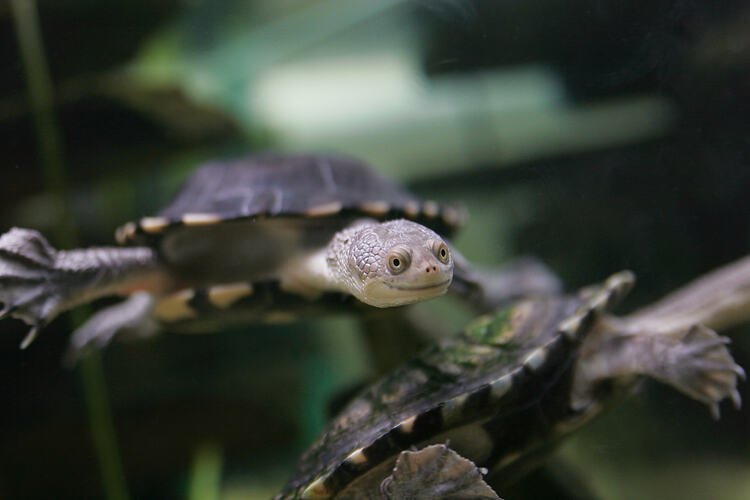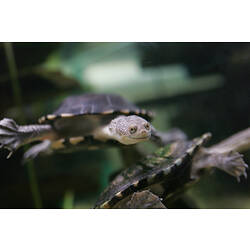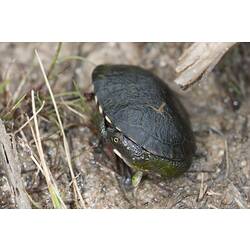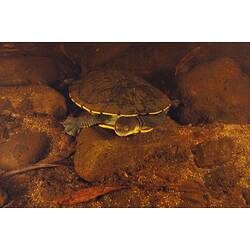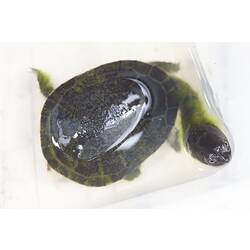General Description
A freshwater turtle with a long slender neck, a small head, and feet with webbed claws. The underneath part of the shell (the plastron) is greatly expanded at the front and extends forward of the upper part of the shell (the carapace). The upper part of the shell is black to brown with yellow patches and, on lighter-coloured animals, black lines may be visible between the scutes (the horny plates on the shell). The under part of the shell is white to cream with some black lines. The shell can be up to 25 cm long.
Biology
Snake-necked Turtles eat a range of food, including frogs, invertebrates, aquatic plants and algae. Females dig nests in the bank of a swamp or stream to lay between 4-20 hard-shelled eggs in spring or early summer. Females may produce two or three clutches in one season. Hatchlings emerge after three to eight months. They are often brightly marked with black and orange on the underside but this fades as they get older. Snake-necked Turtles are typically found near waterways but are often seen wandering overland far from any apparent water source. They may release a pungent fluid when handled.
Distribution
Widespread through drainage systems in eastern mainland Australia from Adelaide, South Australia, to just south of Townsville, Queensland.
Habitat
Coastal and inland waterways, including freshwater swamps, billabongs, lagoons and slow-flowing rivers and creeks.
More Information
-
Animal Type
-
Animal SubType
-
Brief Id
A freshwater turtle with a flat circular shell, long neck and webbed feet.
-
Colours
Yellow, Brown, Orange
-
Maximum Size
25 cm
-
Habitats
-
Diet
Omnivore
-
Diet Categories
Invertebrates, Algae
-
Endemicity
-
Commercial
No
-
Conservation Statuses
CITES: Not listed, FFG Threatened List: Not listed, EPBC Act 1999: Not listed, IUCN Red List: Not listed
-
Taxon Name
-
Scientific Author
(Shaw, 1794)
-
Common Name
Eastern Snake-necked Turtle
-
Other Names
Snake-necked Turtle
-
Kingdom
-
Phylum
-
Subphylum
-
Class
-
Subclass
-
Order
-
Suborder
-
Family
-
Genus
-
Species Name
longicollis
